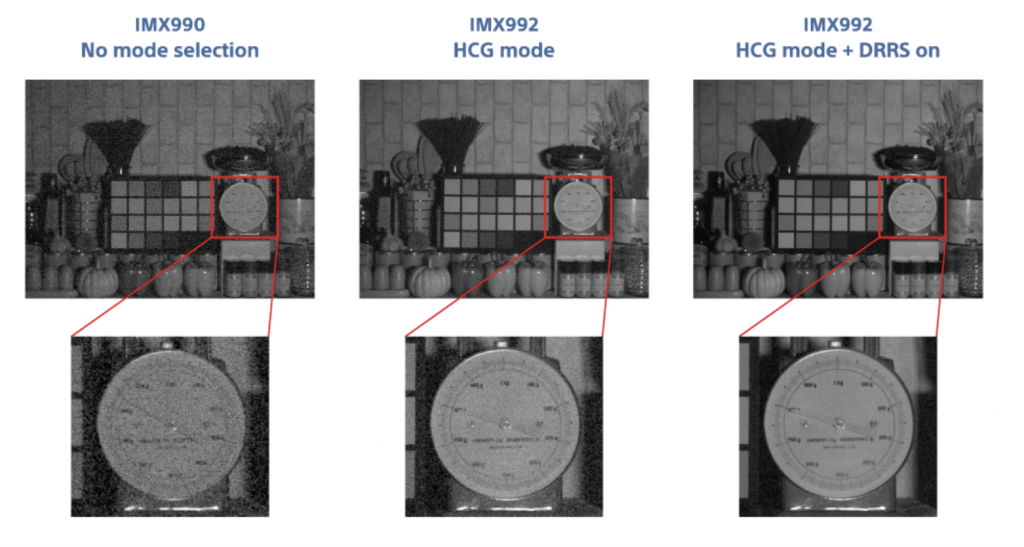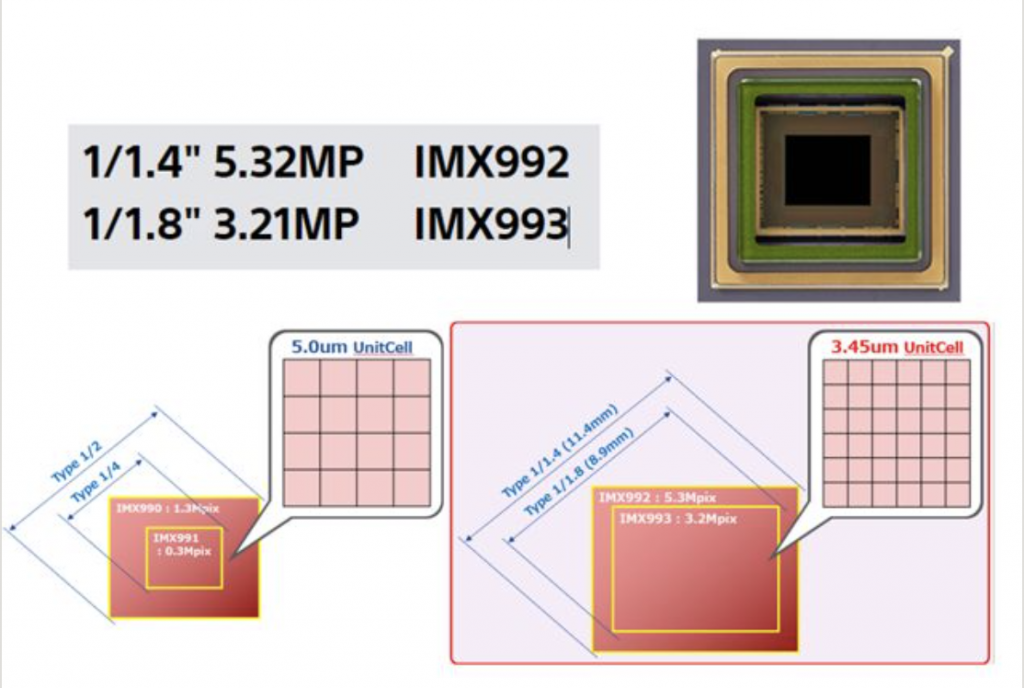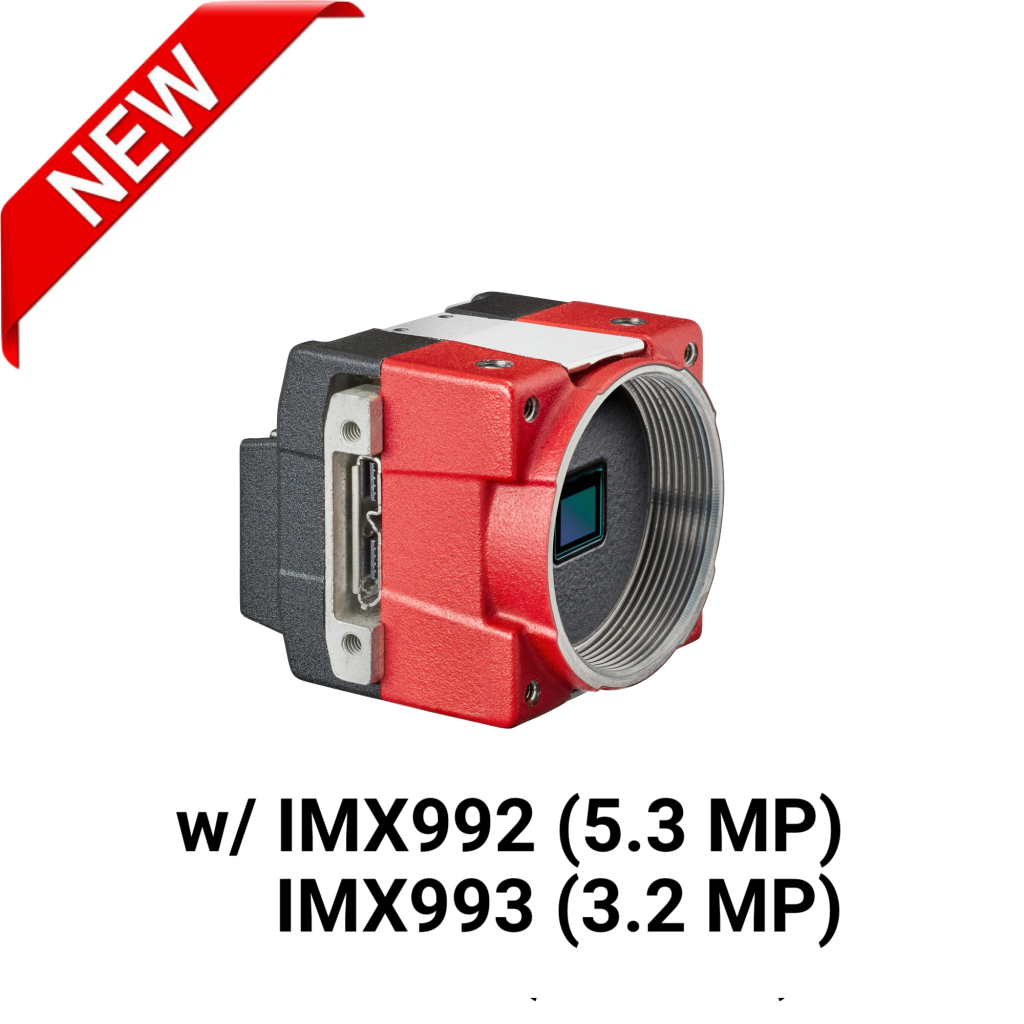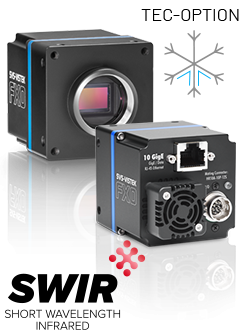When I was first learned about Short-Wave Infrared (SWIR) cameras in 2015, I was immediately surprised by the low resolution of the cameras I was coming across. When cameras in our phones boasts tens of millions of pixels, it was head-scratching at first to learn the average sensor resolution for an InGaAs camera was VGA (640 x 512 pixels or 0.3 MP). In the following years, some companies started to offer high-end solutions with SXGA resolution (1280 x 1024 pix). Though costly, those were the state-of-the-art for commercially available InGaAs sensors.
That remained true until 2021 when Sony released its first generation of InGaAs sensors, the IMX990 and IMX991. With its new SenSWIR™ technology, Sony made a big splash with more-affordable sensors that had both more and smaller pixels. This, along with the fact that the Sony sensors had high quantum efficiency in both the visible and SWIR spectral range (from 400 to 1700 nm), drew many new users to a technology that was so far mostly used in defense and scientific applications.
More and smaller pixels
In the ever-evolving landscape of imaging technology, Sony has once again pushed the boundaries with the release of two new InGaAs sensors with even more and smaller pixels. As such, the cutting-edge IMX992 sensor boasts the highest resolution in its class with an impressive 5.3 MP, promising to revolutionize various industries that rely on advanced imaging capabilities. Along with the IMX992, Sony will also be releasing a the IMX993 with 3.2 MP, thus offering an intermediate choice between the existing 1.3 MP and new 5.3 MP.
In addition to its high number of pixels, one of the standout features of the IMX992 is its even smaller pixel pitch of 3.45 µm. This makes it the smallest InGaAs (Indium Gallium Arsenide) pixel in the industry. This reduction in pixel size is a significant step forward in the miniaturization of high-performance sensors. Sony’s commitment to compact design and power efficiency ensures that this sensor can be seamlessly integrated into a wide range of devices, from handheld cameras to drones. This opens up possibilities for new applications, allowing industries to explore innovative solutions that were once limited by the size and weight of imaging equipment.

First Cameras with IMX992 and IMX993
AVT (Allied Vision Technologies) was among the first companies to release cameras integrating the IMX990 and IMX991 in their the Goldeye camera series (with thermo-electric TE cooling) and Alvium platform (low SWaP uncooled cameras). We are excited to announce that AVT will also be among the first to integrate both the IMX992 and IMX993 in their uncooled Alvium series. Two new models are set to be released with 3 choices of interface (U=USB, C=MIPI & G5=5 GigE): Alvium U/C/G5-530 (with IMX992) and Alvium U/C/G5-320 (with IMX993). The preliminary specs are shown below.

The big question
Now the big question remains: will the sensitivity improve and if so, by how much? While the first generation of SenSWIR sensors (IMX990 and IMX991) by Sony offer a high quantum efficiency throughout the visible and SWIR spectrum, their high readout noise (about 200 e- in high gain setting) has somewhat been limiting for low-light applications where better sensitivity is required. Today, low readout noise for an InGaAs sensor is considered to be in the range of a few tens of electrons. In the announcement of their second generation of the SenSWIR series, Sony promises low-noise performances with several ‘shooting modes’.
While the images below show promise, a comprehensive evaluation of noise reduction can only be attained once we obtain precise EMVA measurements from the final product. Stay tuned for further updates…

Visit our product page below for more information:








